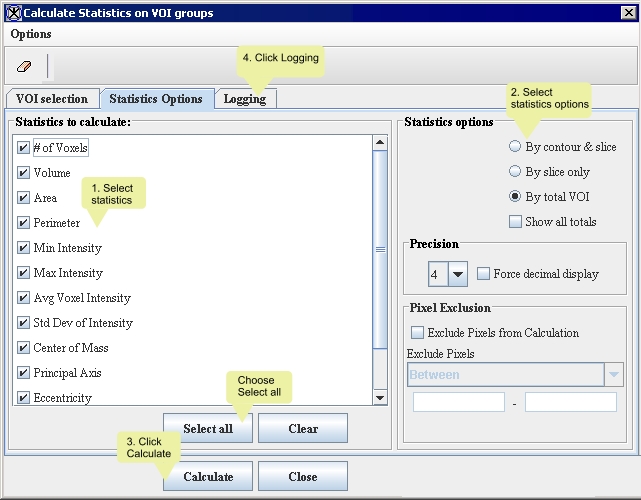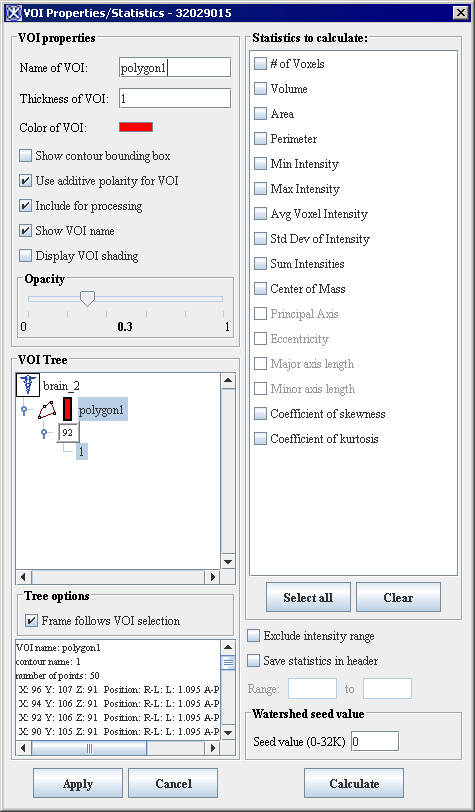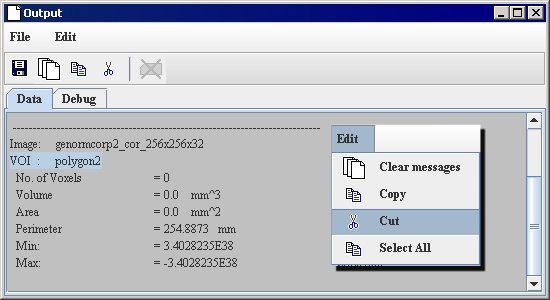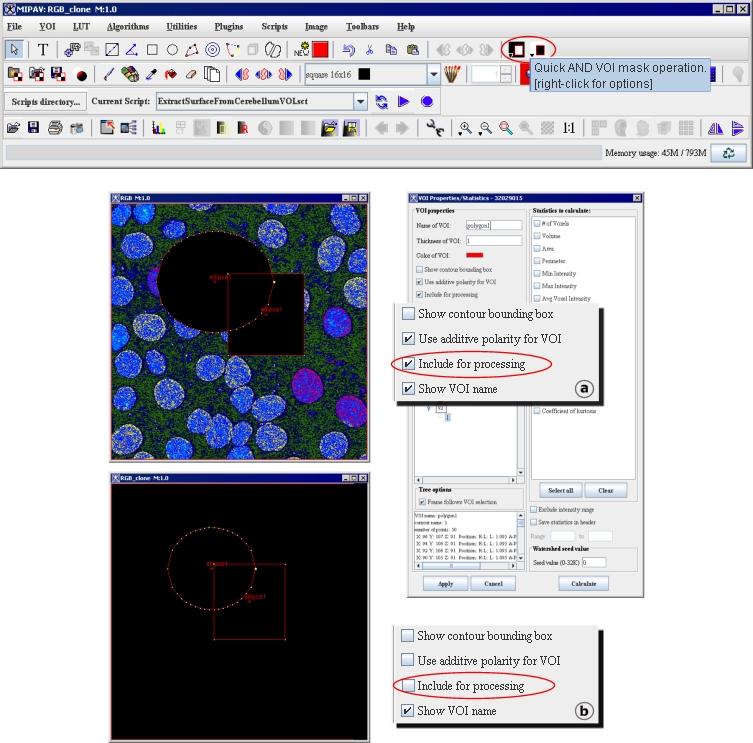Calculating VOI statistics
Contents
Calculating VOI statistics
Once a VOI is drawn, you can calculate the number of voxels in the VOI, the volume, and area. You can also calculate the average and standard deviation of the voxel intensity and the center of mass. For 2D images, you can calculate the principal axis and the eccentricity. MIPAV provides two methods for you to obtain VOI statistics:
By using VOI properties-This method is fast and simple and provides statistics for the entire VOI. Although it allows you to save the results in a text file, that is an additional step. However, using this method, you can type additional information directly onto the Data page with the statistics.
By using the Statistics Generator-Using this method, you can obtain statistics on the entire VOI, on a single slice of the VOI, or by contour and slice. The Statistics Generator also automatically saves the results in either a tab-delimited file or an XML file of your choosing. In addition, it displays statistics in a tabular format.
Note: MIPAV can calculate statistics for only one VOI at a time. In addition, MIPAV calculates the volume and area in a VOI using image pixel (voxel) resolutions.
Calculating VOI statistics
To calculate VOI statistics
- Select the desired VOI in the image window.
- Select VOI > Properties in the MIPAV window. The VOI Statistics dialog box appears.
- Select the statistics to be calculated in Statistics to Calculate. Click Calculate. The VOI Statistics dialog box remains on the desktop. In a few moments, statistical data appears on the Data page in the Output window.
- To close the dialog box, click Cancel in the VOI Statistics dialog box when complete.
- To add information to the statistics, just type it in into the statistics on the Data page.
- To remove the data, select them first, and then click the Cut icon or select Edit > Cut to cut the selected data. MIPAV removes the selected text from the Output window and copies it to the clipboard for use in other applications.
- Select the data that you want to copy, and then click Copy or select Edit > Copy to copy the data to another location in the window or to another application (such as a word processor).
- Click Save or select File > Save messages to save the data and any comments you've added to a text file.
- Click Clear Messages or select Edit > Clear Messages to clear the window.
Using the Include for Processing option
The Include for Processing option is very helpful if you have a set of VOIs delineated on your image and want to use some of them for masking. In that case, select the VOI(s) of interest, then activate the Include for Processing option, and after that, call one of the mask tools, e.g. the Quick AND VOI mask operation. The tool will apply on the selected VOI(s). In case when the Include for Processing option has not been activated, then the Quick AND VOI mask operation will apply on the whole image and darken it. See Figure 34 (a) and (b).
Using the Include for processing option for the Quick AND VOI mask operation. (a) The Include for Processing option is activated and (b) the Include for Processing option is disabled.
Using the Statistics Generator
If you plan either to use a database or spreadsheet to keep track of VOI statistics or to obtain them in an XML format, use the Statistics Generator. As mentioned earlier, the Statistics Generator can provide statistics on an entire VOI(s) or a particular slice or by contour and slice.
Using the Statistics Generator involves three tasks:
- Selecting VOI and save options
- Selecting statistics options
- Reviewing the statistics
Selecting VOI and save options
The first task is to select the VOIs on which you want to obtain statistics and select the file in which the resulting statistics should be saved.
'To Calculate Statistics on VOI Groups
- Delineate or select the VOI(s) on the image.
- Select VOI > Statistics Generator in the MIPAV window. The Calculate Statistics on VOI Groups window appears (Figure 35). This window displays all of the VOIs on the image in the VOI group list on the left.
- Select the VOI on which you want to obtain statistics.
- Press Send Selection Right. The name of the VOI appears in the VOI group list on the right.
- Use Browse to choose a file name in the VOI Statistic File Destination box.
- Select either one of the two formats in the Output Format group: Tab delimited or XML.
- Click Statistics Options. The Statistics Options page opens.
- Proceed to the next task: Selecting statistics options.
Calculate Statistics on VOI Groups window
Selecting statistics options
The Statistics Options page (Figure 36) provides a list of statistics from which you can select and the options to obtain statistics by slice, by contour and slice, or by the total VOI.
To select statistics to perform on VOIs
Figure 36. Statistics Options page

1 Do either of the following in the Statistics to calculate group:



